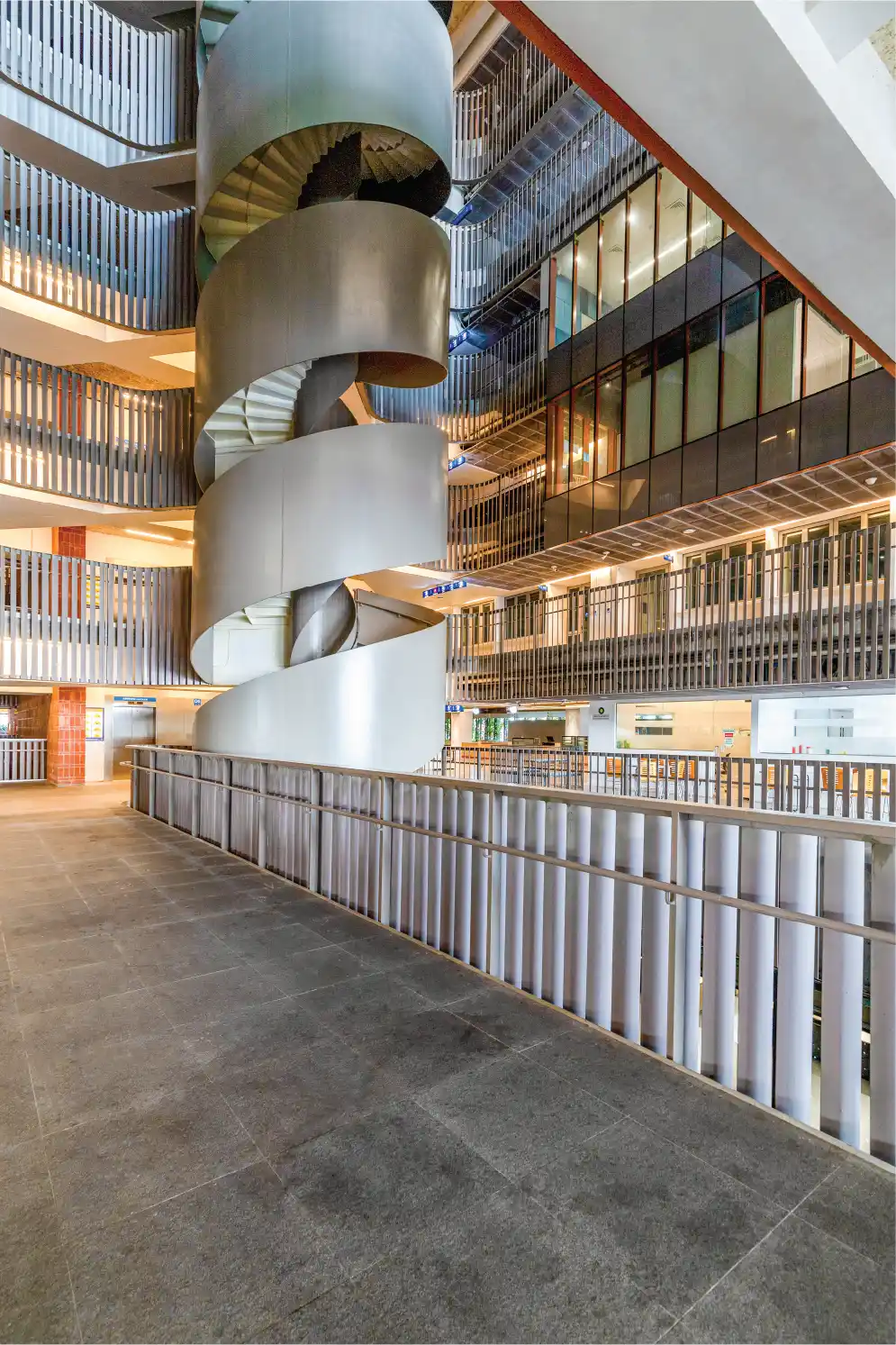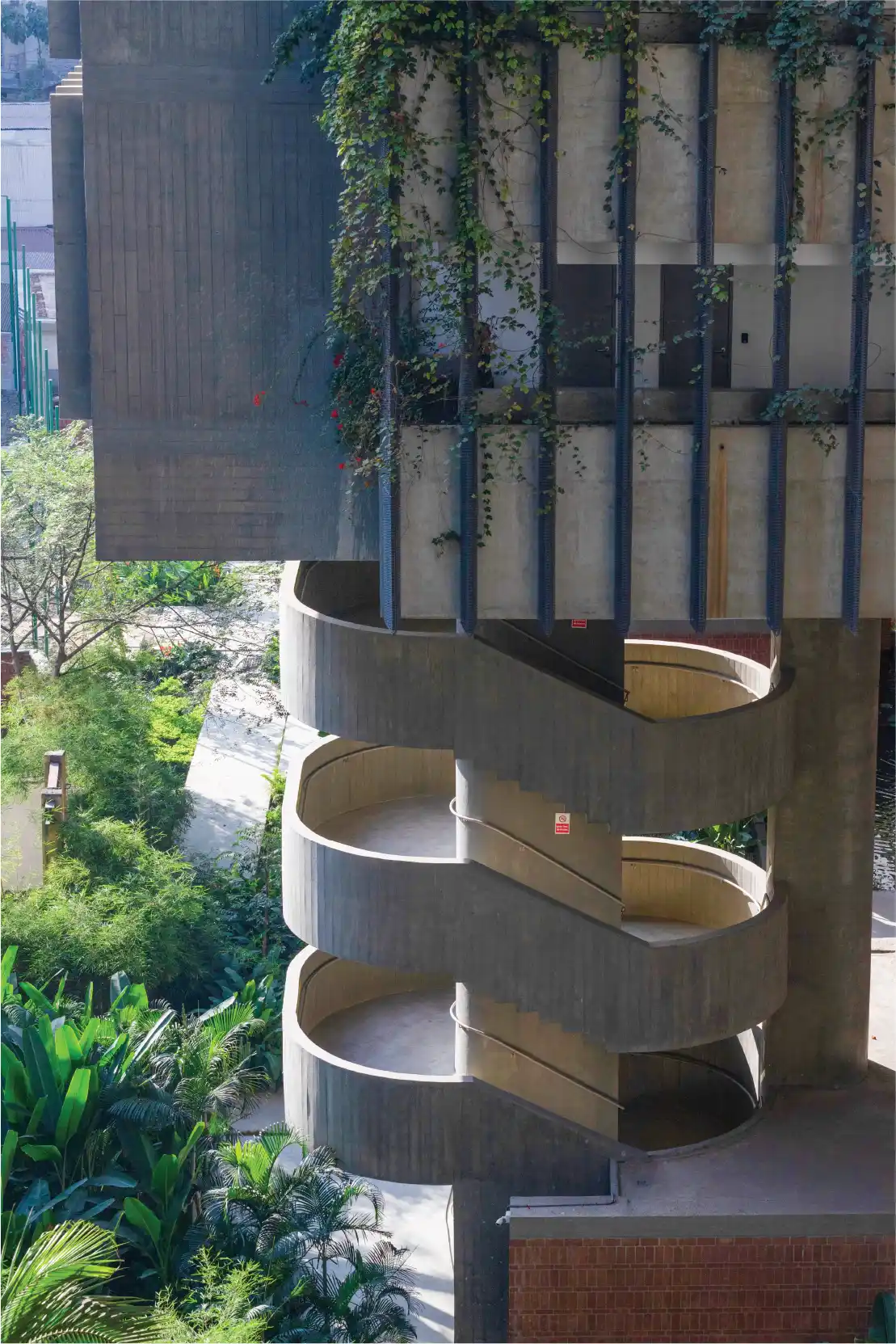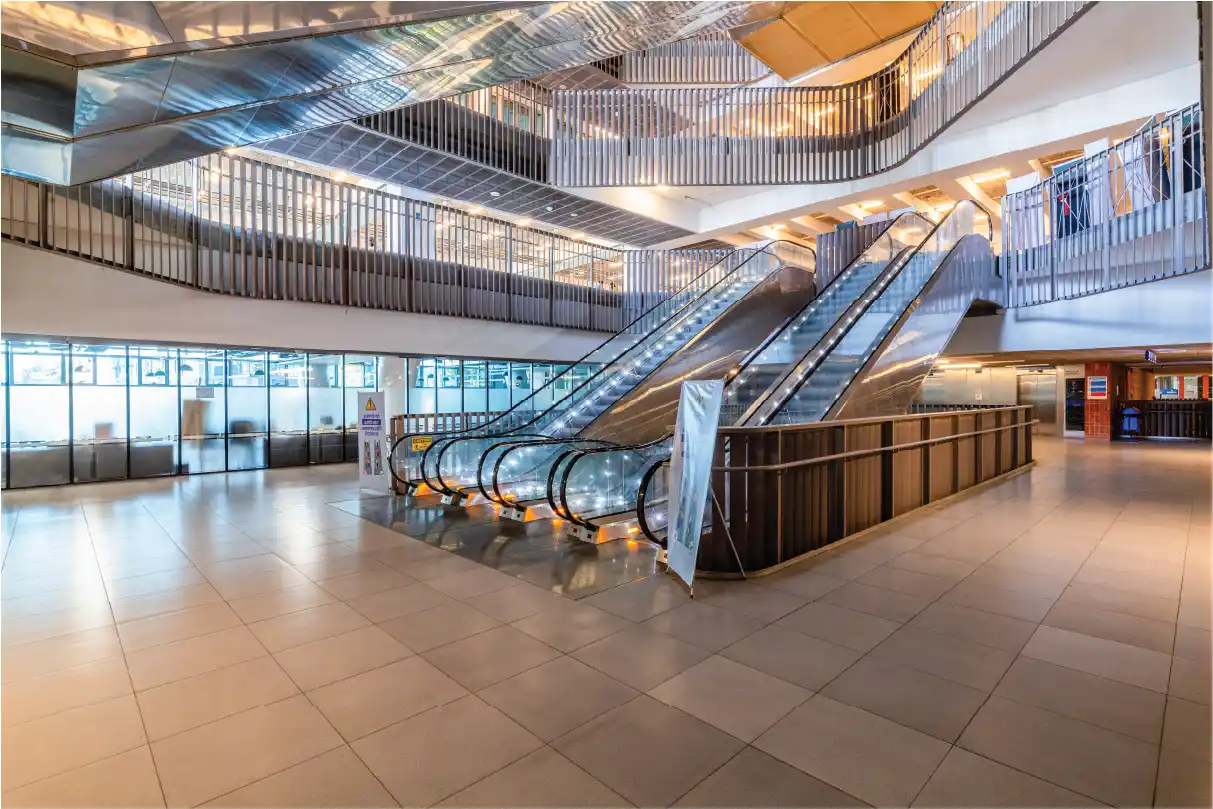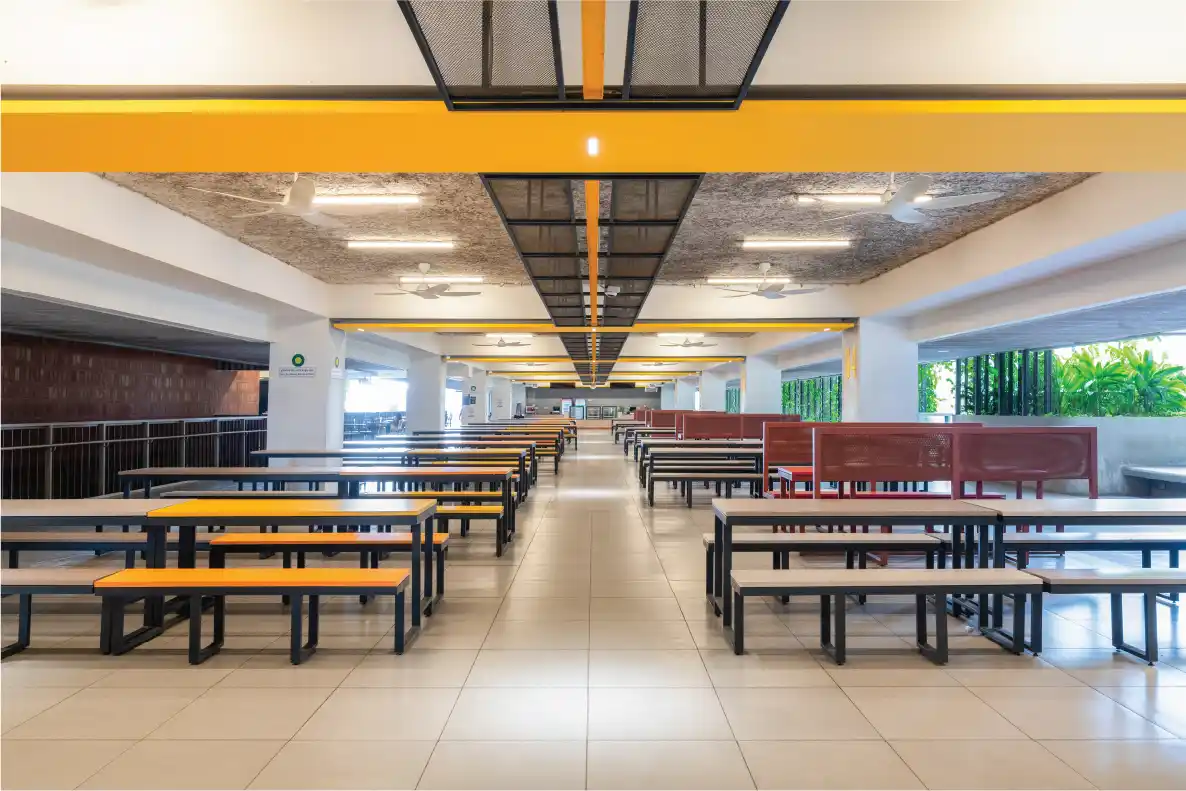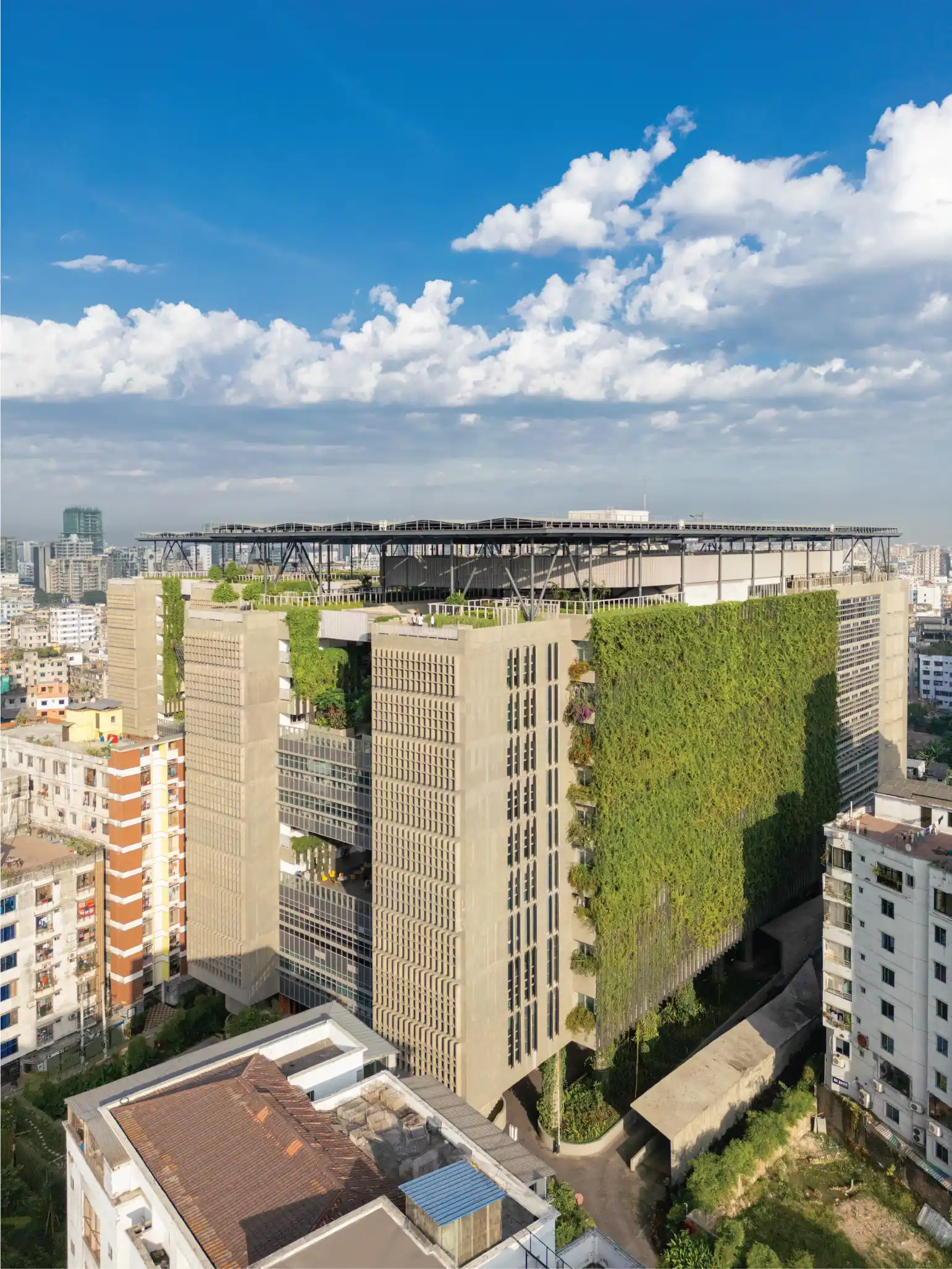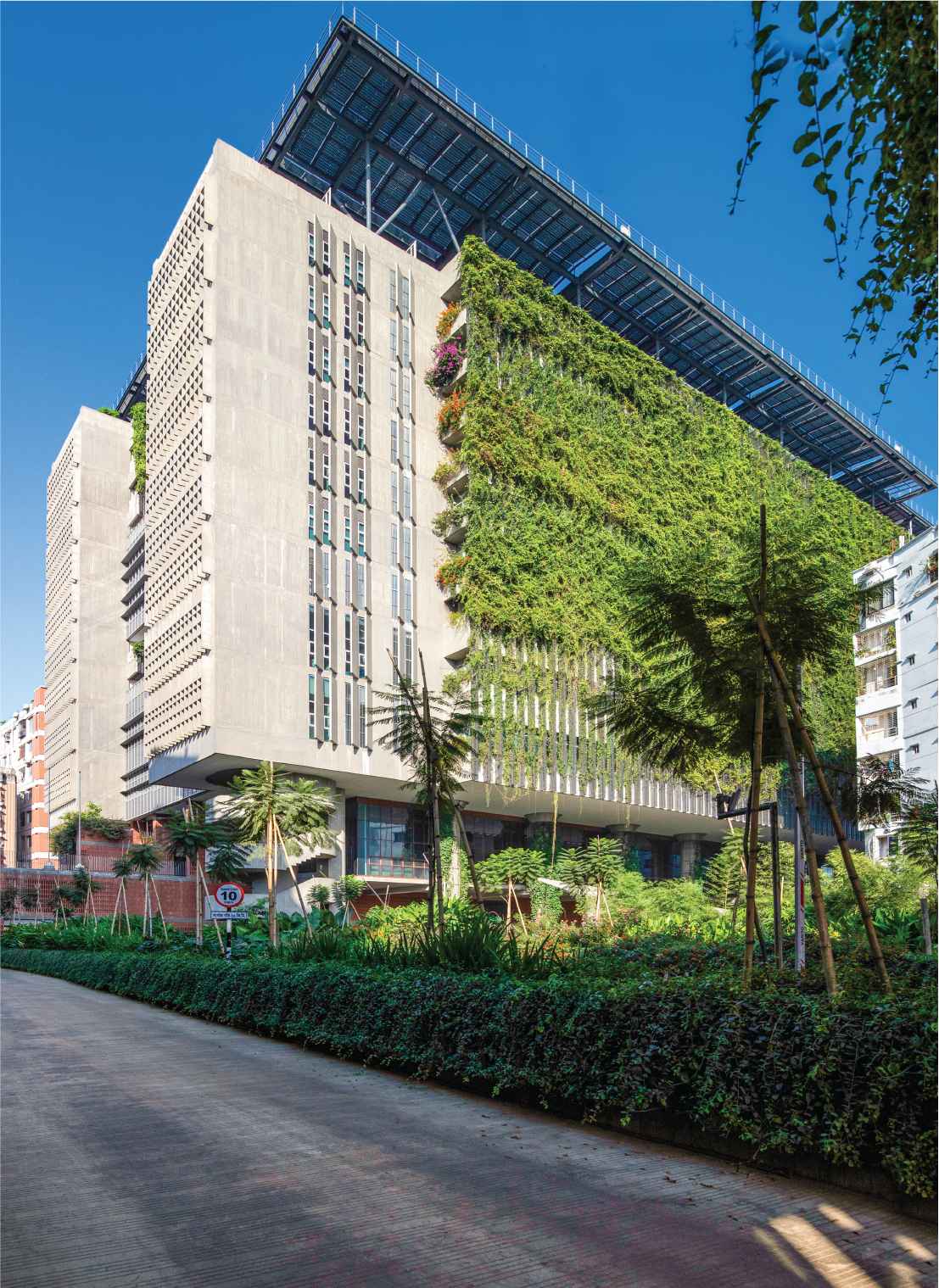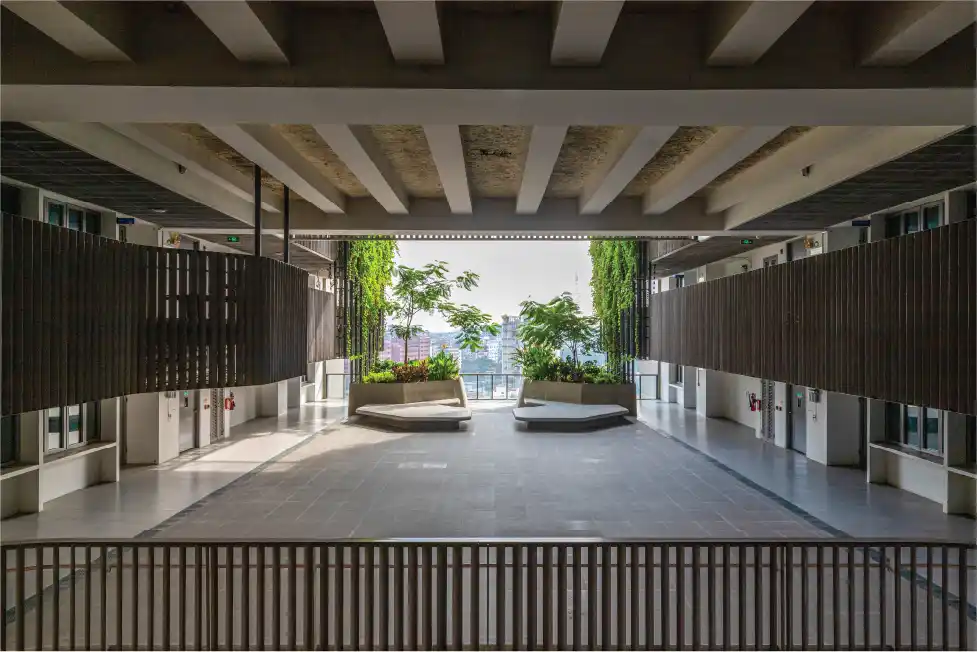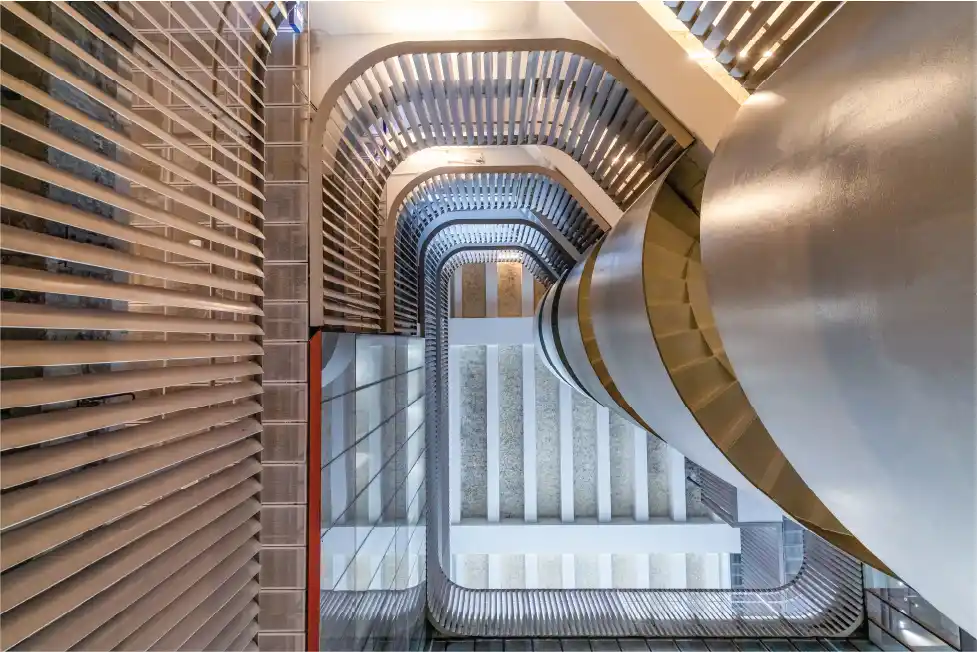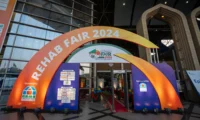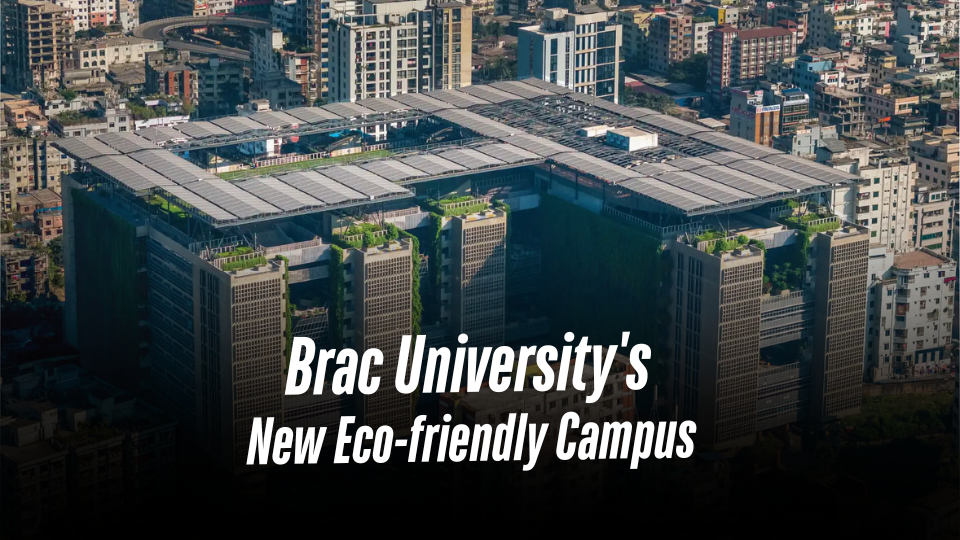
As you travel from Rampura to Badda in Dhaka, the imposing concrete structure in Merul Badda is hard to miss. Initially, it might seem like an industrial or commercial complex due to its sheer size on just 7 acres of densely populated land. However, its true purpose as a university is revealed once you step inside. The ‘triple height space’ design allows for free access to light and air, featuring long escalators connecting various parts, amphitheater-like stairs, and several ‘urban windows’ at the top. The building eschews unnecessary glitter, embracing the raw form of brick and concrete both inside and out. The carefully arranged garden adds a touch of greenery, making it an inviting space for students without any sense of grandeur. Inspired by the Sundarbans ecosystem, Brac University’s new campus seamlessly blends nature with architecture. Designed and constructed by experts from Singapore, China, and Germany, this campus in Merul Badda, Dhaka, stands as Bangladesh’s first eco-friendly and sustainable inner-city campus. Last February, Brac University’s new campus was inaugurated with the theme “In the call of green, the call of the future.” Tamara Hasan Abed, Chairperson of the Board of Trustees of Brac University, highlighted the university’s commitments to academic excellence, cultural prosperity, and environmental conservation. She also spoke about the university’s goals and plans to promote a holistic educational experience through environmentally friendly activities, local performances, and discussions.

Founded by Sir Fazle Hasan Abed, Brac has always distinguished itself through various creative and innovative initiatives. Over the past two decades, Brac University has achieved significant milestones in higher education, research, and international competitions. Despite this, the lack of a permanent campus was a major limitation. Although there was a residential campus in Savar, it was only available to students for one semester. All other educational activities were conducted in multiple multi-storied buildings in the Mohakhali area. The new Merul Badda campus now provides a permanent, eco-friendly, and sustainable space for all students.
Designed by the r e n o w n e d S i n g a p o r e – b a s e d architectural firm WOHA Designs Pte Ltd., Brac University’s new campus is a marvel of modern architecture. Key figures involved in the project include Professor Fuad Hasan Mallick, Dean of Brac University’s School of Architecture and Design; Zainab Farooqui Ali, Chairperson of the Department of Architecture; and Project Architect Shafiqul Islam Suman. This 13-story building with three basements is designed to accommodate around 15,000 students, reflecting a commitment to environmental consciousness.
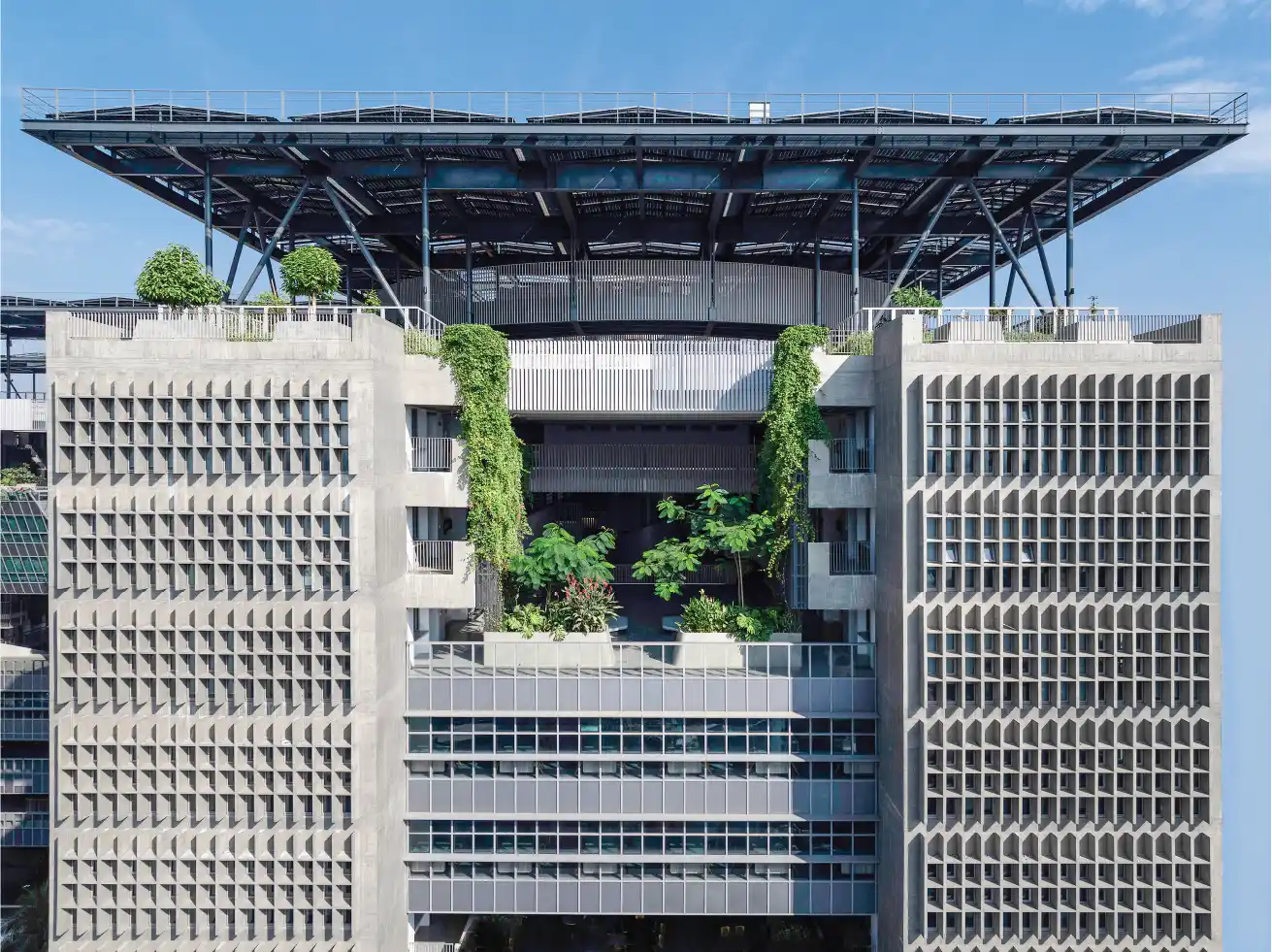
The design allows natural light and air to flow freely, featuring state-of-the-art facilities. Cutting-edge technologies such as cross ventilation, a hybrid thermal management system, and aerodynamic fins ensure optimal airflow. The greenery covering the building enhances the oxygen supply, while the hybrid cooling system maintains clean air in classrooms, helping students stay focused for longer periods. Impressively, the building saves 40% of its energy by reducing reliance on air conditioning.
The campus sits on a transparent reservoir, with rain chains installed to collect and store rainwater, which is used to irrigate the building’s plants, and any excess fills the reservoir. Additionally, the campus boasts an advanced sewage treatment plant for waste management. This energy-efficient design uses a total of 5.5 megawatts of electricity, with 25% sourced from solar panels on the roof. For a facility of this size, this is considerably efficient compared to the usual 8 to 10 megawatts typically required. The interior of this aesthetically pleasing building is mostly open space, encouraging student interaction, extracurricular activities, and co-curricular engagements. Design considerations also include universal accessibility standards, ensuring ease of movement for people with special needs or disabilities. The new campus is not only a hub of academic excellence but also a beacon of sustainability and innovation, paving the way for future educational institutions in Bangladesh.
Tamara Hasan Abed, Chairperson of the Board of Trustees of Brac University, emphasized the inspiration behind the eco-friendly campus and the educational philosophy of Brac University’s founder, Sir Fazle Hasan Abed. She explained that Sir Abed envisioned a university where education and free intellect would harmonize with nature. This new campus, a blend of nature and modern architecture, aims to teach future generations to think differently about life. She also highlighted the importance of innovation and creativity in urban development to protect nature. This campus will set a benchmark for students, planners, and stakeholders in urban planning and e n v i r o n m e n t a l conservation.
Acting Vice-Chancellor Professor Syed Mahfuzul Aziz expressed his determination to develop Brac University’s new campus as a laboratory of knowledge and science. He stated, “We aim to develop this new campus of Brac University as a laboratory of knowledge and science. We expect that we will develop this university as a flagship university of Bangladesh by providing quality research and high-quality education. We are working towards that goal.”
Professor Dr. Fuad Hasan Mallick, Dean of the School of Architecture and Design at Brac University, mentioned that discussions about building a permanent campus began after the establishment of Brac University in 2001. Several discussions with Sir Fazle Hasan Abed led to the selection of Merul Badda as the site for the new campus. One challenge was finding such a large land area in Dhaka, and Sir Abed wanted the campus to be located in Dhaka itself. In 2009, Sir Abed started planning the campus’s construction and selecting who would build it. He aimed for a world-class and exemplary campus that students could be proud of. The responsibility of designing the building was given to Singapore-based firm WOHA, known for their environmentally friendly designs. Sir Abed also appointed legendary Bangladeshi architect Bashirul Haque as an advisor for the project. Once the functional program for the campus was determined, the draft was finalized with key figures, including the dean and chairperson of the university. Fuad Hasan Mallick then visited the WOHA office in Singapore to discuss the campus’s design, and they developed a scheme. Upon returning to Dhaka, they presented it to Sir Fazle Hasan Abed, who always respected expert opinions. He simply requested a campus that would serve as a model for environmental conservation. WOHA engaged several expert organizations for this project, including architect Chun Hyok Sim and the German company Transsolar, which provided consultancy on energy elements like solar energy and ventilation. The structural concept of this building is a first for Bangladesh, featuring a diaphragm wall foundation, previously unseen in the country. Engineers, including a Bangladeshi bridge engineer, collaborated with WOHA and Singapore-based Web Structures, with their renowned Iranian-Italian structural engineer, on the building’s structure. Architect Shafiqul Islam Sumon noted that the building occupies 50% of the 7-acre Merul Badda area, with the remaining space dedicated to a reservoir and greenery.
Nearly half of the land is dedicated to the building itself, while the remainder is utilized for a water body, lake, plantation, and other features aimed at promoting biodiversity. The design of the building largely utilizes natural sunlight, thereby reducing the need for artificial lighting. Lush greenery, both inside and outside, provides shade, temperature control, improved air quality, and aesthetics. Harvested rainwater and a cleansing biotope meet 20% of the campus’s water demand, especially for waterbodies, vegetation, toilet flushing, and firefighting. A quarter of the campus’s energy demand is met by solar panels on the roof, highlighting the commitment to sustainability. The greenery, sand, and gravel on the rooftop have therapeutic effects, promoting wellness. The rooftop jogging track is a great place to get some exercise while enjoying a beautiful view. The roof is covered with natural green grass, and the architecture draws inspiration from the Sundarbans ecosystem. Each block’s orientation maximizes natural airflow, while a hybrid cooling system reduces air conditioning dependency and maintains thermal comfort. The pure airflow ensures optimal oxygen levels, keeping students refreshed even during long classes and cutting electricity usage by about 40%. The vertical green walls enhance sustainability. Explaining the term “Sustainable Inner City Campus,” Sumon highlighted that, unlike typical university campuses in large open spaces, this campus in a densely populated city area provides an oasis of eco-friendly features and modern technology. The campus experience is distinctly different from the city’s bustle. This campus is unique for several reasons. Unlike most buildings in Bangladesh, which face south, this building introduces air through spaces between blocks, distributing it throughout. This innovative green building includes plans for large trees, arranged vertically rather than horizontally as on other campuses. Despite the COVID-19 pandemic causing some delays, the construction was completed in December 2023. Students and others are thrilled with this remarkable campus.
The campus boasts cutting-edge learning facilities, featuring 123 classrooms, 5 lecture theatres, and 105 laboratories. The library houses over 45,000 books and includes AR/VR facilities for an immersive learning experience. The alumni lounge at Brac University’s new campus provides a welcoming space for graduates to reconnect, network, and reminisce. There’s a versatile multipurpose hall for hosting various events, including fairs, conferences, cultural events, and sports. The cafeteria offers a warm and inviting space for socializing and enjoying meals.
Written By: Lamia Mehreen



